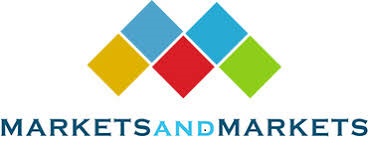The feed enzymes market is projected to grow at a CAGR of 9.3% from 2017, to reach a projected value of USD 1,428.6 Million by 2022. The replacement of expensive fish meal with feed enzymes, and rising awareness about feed quality present feed enzyme providers with lucrative opportunities in the feed enzymes market in the next five years. Fish meal is one of the most critical and expensive ingredients in aquafeed production; however, fish meal is scarcely available, making it a costly ingredient. The increasing cost of fishmeal has encouraged feed manufacturers to search to cheaper alternative protein sources, such as plant proteins. This is one of the major opportunities in the feed enzymes market.

Download PDF Brochure: https://www.marketsandmarkets.com/pdfdownloadNew.asp?id=1157
High cost of feed in livestock farming
Feed accounts for around 60%–70% of the total cost in livestock farming. According to the article “Feed Grains and Livestock: Impacts on Meat Supplies and Prices”, published in the year 2008, the cost of feed has been increasing significantly and has increased by ~40-60% in 2008 over 2006. In feed ingredients, energy (carbohydrates fats), protein, and phosphorus account for a significant part of the feed cost. The average cost contributed by energy, protein, and phosphorus to the total feed is 64%, 27%, and 9% respectively.
By using feed enzymes, the digestibility of these nutrients can be improved; a single or multiple enzyme increase the digestibility of feed and reduces the cost. Phytase reduces the need for providing inorganic phosphorous supplementation, as it increases the conversion of the unavailable forms of phosphorus in feed into the available forms. Similarly, carbohydrase increases the digestibility of the starch (amylase) and also releases energy from fibrous portion and grain by-products (such as xylanase).
For instance, in poultry, the use of these enzymes increases energy availability by 3%–5%. As energy is the most expensive nutrient in diet, it reduces the feed cost significantly. According to a research conducted at Purdue University and QRPDC in Australia in 2008, the cost at which farms invest in enzymes is USD 1.5 per ton; however, after the addition of feed enzymes, the feed cost reduces by USD 2.50 per ton for low-energy feeds and USD 4.00 per ton in high-energy feeds. This survey also stated that the actual savings depend on feed ingredient prices; with an increase in feed ingredient prices, the savings will also increase.
How the increasing need for nutrition-dense fish feed is creating growth opportunities for manufacturers in the feed enzymes market?
The growth in the production of aquaculture and expansion in cultivation area is increasing the demand for aquaculture feed. Fish meal is one of the most critical and expensive ingredients in aquafeed production. The content of fishmeal in commercial aquafeed ranges from 30%–50%; however, fish meal is scarcely available making it a costly ingredient. The increasing cost of fishmeal has encouraged feed manufacturers to search for cheaper alternative protein sources, such as plant proteins. Hence, since the last few decades, the aquaculture industry has been trying to improve the nutritional value of fish feed by supplementing it with enzymes, to find suitable alternatives to fish meal.
Feeding enzymes to shrimps and fishes has been one of the major nutritional advances in the aquaculture sector since last few years. Exogenous enzymes are now extensively used throughout the world as additives in animal diets. Supplementation with enzymes can help to eliminate the effects of anti-nutritional factors and improve the utilization of dietary energy and amino acids, resulting in improved performance of fish/shrimps. Also, feed enzymes are natural products of fermentation, which eliminates the threat of adverse impact of chemicals on fish and pond environment. Enzymes also reduce the problems related to high phosphorus output in pond environments by reducing ammonia levels in pond water. These benefits have resulted in the growing demand for feed enzymes in the aquaculture sector.
Request for Customization: https://www.marketsandmarkets.com/requestCustomizationNew.asp?id=1157
Asia Pacific To Offer Lucrative Growth Opportunities to Key Players in the Feed Enzymes Market By 2022
As consumers in various countries of this region are adopting protein-rich diets, retailers are increasingly allocating space to a range of high-quality meat and poultry products in their stores. To cater to the increasing demand for high-quality meat products, rearers allocate a significant part of their budget to feed enzymes, as they enhance the health, growth, and digestive process of the livestock. Due to the increasing demand for meat products among consumers, Asia Pacific is projected to offer lucrative opportunities in this market.
Koninklijke DSM N.V. (Netherlands), E. I. du Pont de Nemours and Company (US), Alltech Inc. (US), and BASF SE (Germany) are some of the key players operating in the feed enzymes market. Leading players in the market are mainly focusing on product innovation and new product development to expand their product portfolio and improve their presence.
Media Contact
Company Name: MarketsandMarkets
Contact Person: Mr. Shelly Singh
Email: Send Email
Phone: 1-888-600-6441
Address:630 Dundee Road Suite 430
City: Northbrook
State: IL
Country: United States
Website: https://www.marketsandmarkets.com/Market-Reports/feed-enzyme-market-1157.html


